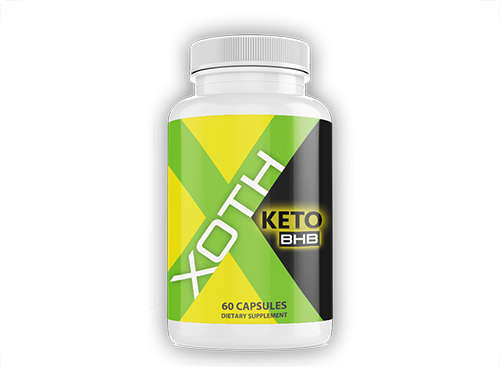
Keto Quick Jump Menu (follow links below)
In a world obsessed with diets and quick fixes, the ketogenic diet, often referred to as keto, stands out as a game-changer. It’s not just another fad; it’s a lifestyle that can help you lose weight, improve your health, and boost your energy levels. Are you ready to embark on this transformative journey? This beginners guide to keto will make it easy for you to get started on the keto diet and inspire you to take action.
Understanding the Basics
Keto is a low-carb, high-fat diet that alters the way your body produces energy. Normally, your body primarily relies on carbohydrates for fuel. However, when you reduce your carb intake significantly, your body enters a state known as ketosis. During ketosis, it switches to burning fat (ketones) for energy. This change in metabolism is the key to the keto diet’s success.
The Science Behind Keto
To grasp the science behind keto, you need to know about macronutrients – the three main components of your diet: carbohydrates, fats, and proteins.
- Carbohydrates: These are your body’s primary source of energy. When you eat carbs, they break down into sugar (glucose), which your body uses for fuel.
- Fats: In a keto diet, fats take center stage. When you consume fats and reduce carbs, your body starts to break down stored fat for energy.
- Proteins: These are essential for muscle growth and repair, but you’ll want to consume them in moderation on keto.
Benefits of Keto
1. Weight Loss
Keto’s primary benefit is weight loss. When you’re in ketosis, your body becomes an efficient fat-burning machine. By limiting carb intake and boosting fat consumption, you encourage your body to use stored fat for energy. The result? You start shedding those extra pounds.
2. Improved Health
Keto can have a significant impact on your overall health. It has been shown to lower blood sugar levels, improve insulin sensitivity, and reduce the risk of type 2 diabetes. It can also lead to improved cardiovascular health by reducing triglycerides and increasing “good” HDL cholesterol levels.
3. Enhanced Mental Clarity
The benefits of keto aren’t just physical; they extend to your mental well-being. Many people on a keto diet report improved mental clarity, focus, and reduced brain fog. The stable energy levels that come with ketosis can help you stay alert and productive throughout the day.
4. Increased Energy Levels
Do you often experience energy crashes after a high-carb meal? Keto can help stabilize your energy levels, making you feel more energetic and alert. Say goodbye to the rollercoaster of sugar highs and crashes.
5. Better Skin
Some individuals find that keto improves their skin conditions, including acne. Reduced sugar intake can lead to clearer, healthier skin.
Getting Started with Keto
Now that you understand the basics and the benefits of the keto diet, it’s time to dive into the practical aspects of getting started.
1. Consult a Healthcare Professional
Before beginning any diet, especially one as unique as keto, it’s wise to consult with a healthcare professional. They can provide guidance and ensure that keto is safe and suitable for your specific needs and health conditions. Look for a doctor who thinks nutrition is important, or find a nutritionist to guide you along the path.
2. Set Clear Goals
What are you looking to achieve with the keto diet? Whether it’s weight loss, improved health, or increased energy, defining your goals will help you stay motivated and track your progress.
3. Calculate Your Macros
To get into and stay in ketosis, you need to track your macronutrient intake. Typically, a standard keto diet consists of about 70-75% fat, 20-25% protein, and 5-10% carbohydrates. There are online calculators and apps to help you determine your ideal macro ratios based on your goals and body composition.
4. Clean Out Your Pantry
One of the best ways to succeed on the keto diet is to remove temptation from your home. Clean out your pantry and refrigerator of high-carb foods, and replace them with keto-friendly alternatives.
5. Plan Your Meals
Meal planning is a key component of keto success. Plan your meals in advance to ensure you’re getting the right balance of fats, proteins, and low-carb vegetables. Stock up on keto staples like avocados, nuts, and healthy oils.
6. Start Slowly
Transitioning to a low-carb diet can be challenging, especially if you’re used to a high-carb lifestyle. Consider gradually reducing your carb intake over a few days or a week to ease into ketosis.
7. Stay Hydrated
Keto can have a diuretic effect, causing you to lose more water and electrolytes. Ensure you stay well-hydrated and replenish electrolytes with foods like leafy greens and electrolyte supplements.
8. Monitor Your Progress
Tracking your progress is motivating. Keep a food diary, take regular photos, and note how you feel. Celebrate your achievements, no matter how small they may seem.
9. Seek Support and Information
There’s a wealth of information and support available for those on the keto diet. Online communities, social media groups, and books can provide inspiration, recipes, and tips to help you stay on track.
10. Be Patient
Remember that every journey is unique, and results may vary. Keto is not a quick fix; it’s a lifestyle change. Be patient with yourself and stay committed to your goals.
Keto-Friendly Foods
To make your keto journey easier, here’s a list of foods that are keto-friendly:
- Meat: Beef, poultry, pork, and lamb are all excellent sources of protein.
- Fatty Fish: Salmon, mackerel, and sardines are high in healthy fats and low in carbs.
- Eggs: A versatile and nutritious source of protein.
- Dairy: High-fat dairy products like butter, cheese, and heavy cream can be included in your diet.
- Avocado: A keto superstar with healthy fats and minimal carbs.
- Nuts and Seeds: Almonds, walnuts, chia seeds, and flaxseeds are great choices.
- Low-Carb Vegetables: Spinach, kale, cauliflower, and broccoli are low in carbs.
- Oils: Coconut oil, olive oil, and avocado oil are ideal for cooking and dressing.
- Berries: Small servings of berries like strawberries, blueberries, and raspberries can satisfy your sweet tooth in moderation.
Common Mistakes to Avoid
As you embark on your keto journey, it’s essential to be aware of common mistakes that can hinder your progress:
1. Eating Too Many Carbs
Overconsumption of carbs can kick you out of ketosis. Pay close attention to your carb intake.
2. Ignoring Protein Intake
While keto is a high-fat diet, don’t forget to get enough protein for muscle health and repair.
3. Not Drinking Enough Water
Dehydration is a common issue on keto. Stay hydrated to feel your best.
4. Excessive Snacking
Constant snacking can prevent your body from burning stored fat. Stick to regular, balanced meals.
5. Neglecting Fiber
Fiber is crucial for digestion. Make sure to include low-carb, high-fiber foods in your diet.
6. Avoiding Vegetables
Low-carb veggies are essential for vitamins, minerals, and fiber. Don’t skip them.
7. Not Adapting to Your Needs
Remember that everyone’s body is different. Adjust your diet to suit your individual needs and preferences.
Final Thoughts on this beginners guide to keto
The ketogenic diet is not just about losing weight; it’s a holistic lifestyle change that can enhance your overall well-being. By understanding the basics, setting clear goals, and following a few simple guidelines, you can start your keto journey with confidence. Remember, the key to success is determination, patience, and a willingness to embrace a healthier you. So, are you ready to take the plunge and experience the transformative power of keto? Your journey starts today.


